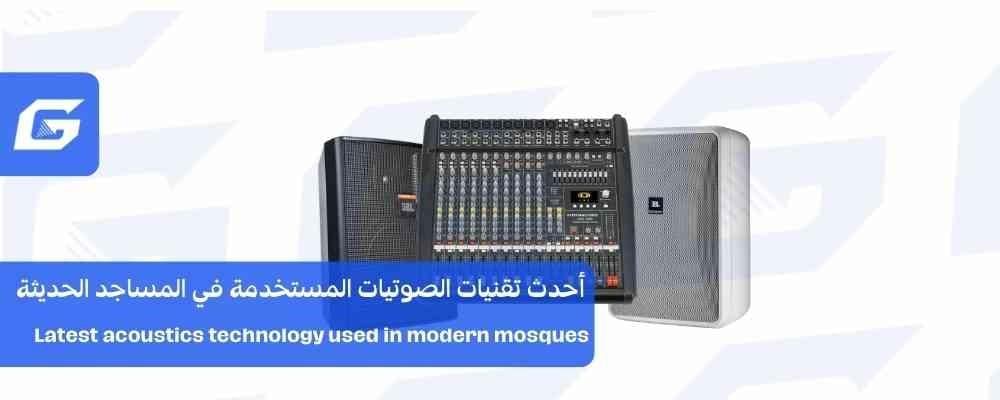Modern technology in audio systems has become a necessity for contemporary mosques, as it aims to improve sound clarity and deliver high-quality recitations and sermons to every corner of the mosque. With the advancement of technology, innovative solutions have emerged that meet the needs of both large and small mosques, and ensure a comfortable audio experience for worshipers. In this article, we review the latest audio technologies used in modern mosques.
1. Digital Signal Processors (DSP)
Its benefits:
- Adjust audio frequencies to remove distortion and noise.
- Improve the clarity of the imam's voice and sermons.
- Flexibility to modify to suit the needs of mosques of different sizes.
Application in mosques:
- Used to adjust microphones and speakers and distribute sound in a balanced way.
- Provides the ability to individually control the sound for each area within the mosque.
2. Line Array Speaker Systems
Its features:
- Even sound distribution in large mosques with high ceilings.
- Reduce sound reflections and echo.
- Compact design provides powerful audio performance without compromising on the mosque's decor.
How does it work?
- The speakers are installed in vertical rows facing the worshippers, allowing the sound to be directed precisely to cover all areas.
3. Wireless control systems
Advantages:
- Easily manage your audio system via smartphone or tablet apps.
- Ability to adjust the volume during the sermon or prayer without having to access the equipment directly.
- Adapting to different events such as Friday prayers or special occasions.
Its role in modern mosques:
- It facilitates audio management and provides a distinctive experience for worshippers without interruption.
4. Echo and noise reduction techniques
Solutions used:
- Installing innovative sound insulation on walls and ceilings to reduce reflections.
- Using intelligent audio processors to identify and remove annoying frequencies.
- Architectural designs that take into account natural sound distribution.
Benefit:
- Ensuring clarity of recitation and sermons even in mosques with open construction or many decorations.
5. Smart speakers
Latest innovations:
- AI-powered speakers automatically adjust the volume based on the number of worshippers and the ambient noise level.
- Built-in speakers with Bluetooth or Wi-Fi technology to communicate with other devices.
Its role in mosques:
- Delivers superior sound quality without the need for constant human intervention.
- Provides flexibility in use and maintenance.
6. Modern microphone systems
New technologies:
- Wireless microphones with fixed frequencies to avoid interference.
- Omnidirectional microphones capture sound clearly from any angle.
Examples of use:
- Microphones for the imam and preacher that ensure clear sound in large and crowded halls.
- Microphones are available for children or women in the side prayer rooms.
7. Linking audio systems to interactive screens
Advantages of integration:
- Providing an integrated experience that includes sound and image.
- Displaying Quranic texts and sermons translated on screens for non-Arabic speaking worshippers.
- Facilitating communication between worshippers and the imam during special occasions.
Practical application:
- Use of audio systems connected to illustrative displays to enhance the educational and religious experience.
8. Low energy and high efficiency systems
Recent innovations:
- Sound systems that operate efficiently with lower energy consumption.
- Eco-friendly speakers suitable for long-term use in mosques.
Its importance:
- Reduce operating costs.
- Delivering high performance while maintaining resource sustainability.
conclusion
Modern mosque audio systems are becoming more sophisticated and efficient, thanks to advanced technology that focuses on providing an optimal audio experience for all worshippers. From digital sound processors to smart speakers, these technologies make a huge difference in improving the clarity and distribution of sound within the mosque. Investing in these solutions helps create a comfortable spiritual environment and provide the best experience for worshippers.
Post Cover Description
Cover showing a modern mosque with advanced audio systems, including Line Array speakers and state-of-the-art wireless controls. The image features cleverly placed speakers on the walls and connected digital displays, reflecting advanced technology that meets the needs of the modern age.

